Ladybugs are the general name for beetles with round protrusions in the family Coleoptera (scientific name: Coccinellidae). They are small insects with bright colors, often with red, black or yellow spots. Also known as Little Fatty, Matchmaker, Sister Hua, Tiandao Bug, Scarab Beetle, Scarab Beetle (but Scarab Beetle actually refers to another kind of beetle), it is even commonly known as Stinky Beetle because the secretions of some species are smelly (but this is also mixed name). There are more than 5,000 species of ladybugs in the world, more than 450 of which live in North America.
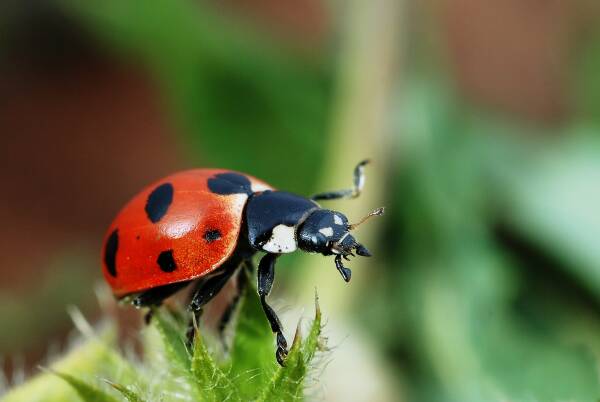
The adult ladybug is about a few millimeters to 1cm long, with a hemispherical shape and short legs and antennae. The body colors include black, blue, red, orange, yellow, brown and other bright colors. The patterns on the body also vary depending on the species, but the most common one is the seven-star ladybug with a smooth body and red and black colors. Despite their unique appearance, ladybugs are often confused with other insects. However, ladybugs behave differently from other insects. This article looks at colorful insects that look like ladybugs and how to tell them apart.
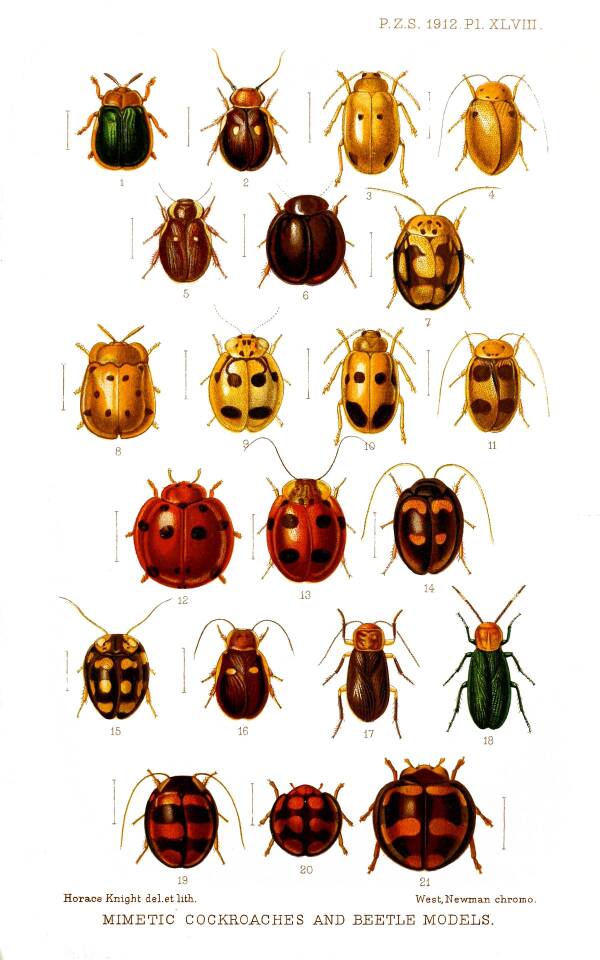
1. Cockroaches that imitate beetles
While many cockroaches are brown or black in appearance, some, especially those in the genus Prosoplecta, resemble ladybugs. Like the seven-spotted ladybug, many Prosoplecta cockroaches have red bodies with black spots. Additionally, some Asian cockroaches in this genus have bright orange bodies similar to those of ladybugs.
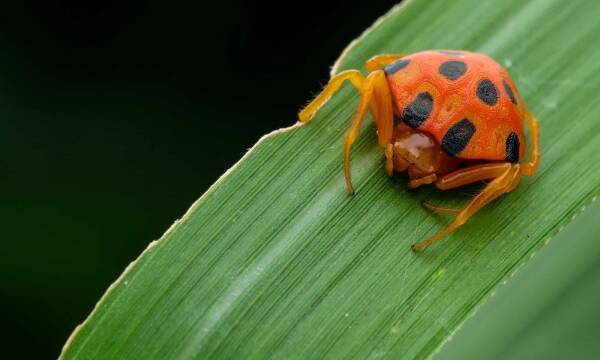
2. Spiders that imitate ladybugs
Spiders in the genus Coccinella, such as Lady Tsushima, are also very similar to ladybugs. Their bodies are orange-red or yellow-orange dome-shaped with black markings, and their heads are yellow-orange without markings. Ladybugs, on the other hand, have black heads. Additionally, most ladybugs have black legs, but ladybug-imitating spiders have yellow-orange legs.
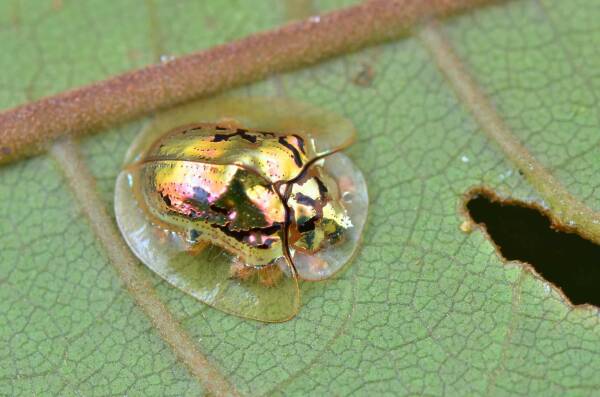
3. Golden tortoise beetle
Scarab beetles are a type of beetle in the family Chrysomelidae. These beetles are named for their mirror-like golden bodies, but they can also be reddish-brown with black spots. Their shape and size are very similar to ladybugs. Their unique golden color changes depending on the situation in which they are found. For example, they may turn reddish-brown during mating. Color changes can also be observed when these beetles take in water or sense danger.

4. Spotted tortoise beetle
The spotted tortoise beetle is another species in the Chrysomelidae family. These beetles do not have dome-shaped bodies like ladybugs. Their resemblance is often associated with their small heads and striped markings on their shiny golden backs. The spotted tortoise beetle is common in Central and North America.
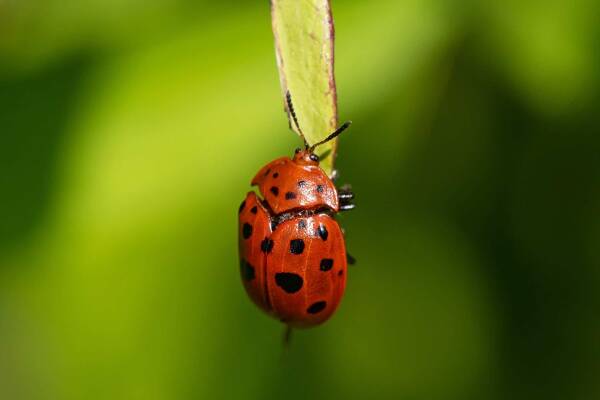
5. Argus tortoise beetle
The Argus tortoise beetle, also known as the milkweed tortoise beetle, is a species of leaf beetle in the family Chrysomelidae. Its name comes from the Greek mythological figure Argus Panoptes, a creature with multiple eyes. It is one of the largest leaf beetles native to North America and is known for its yellowish-red or dark yellow body with black spots on its back. The Argus tortoise beetle is very similar to the ladybug in size, shape, and markings on its back. However, Argus tortoise beetles can extend their heads like turtles, which makes them different from ladybugs.
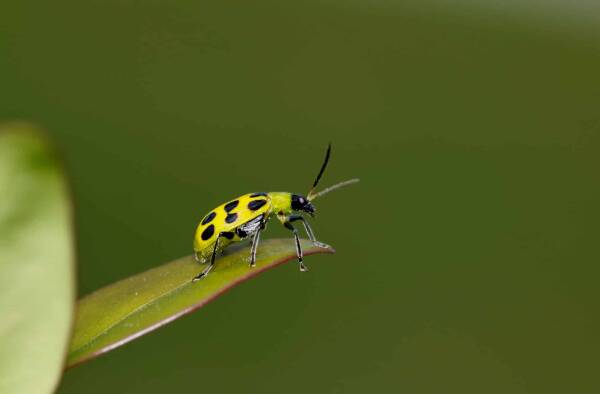
6. Spotted Cucumber Beetle
The spotted cucumber beetle is similar to the yellow ladybug and is yellow-green in color with black spots. Their small black heads further mimic the physical characteristics of most ladybugs. However, unlike dome-shaped ladybugs, spotted cucumber beetles rarely grow larger than 0.2 inches. In comparison, some species of ladybugs can reach 0.7 inches in length.

7. Bean Leaf Beetle
The bean leaf beetle is a beetle in the family Chrysomelidae that is commonly found in legume, alfalfa and soybean crops. It has gold and black spots, which is why it is often confused with many ladybird species. The bean leaf beetle has four black spots on its back, and there is also a spotless variant. However, unlike ladybugs, which often have spots on their heads, bean leaf beetles' heads are always black.
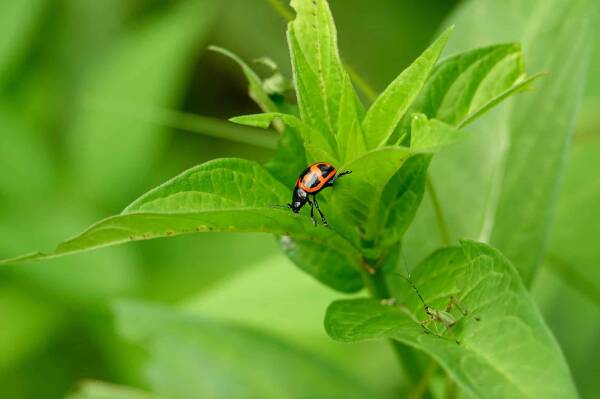
8. Swamp Milkweed Leaf Beetle
The swamp milkweed leaf beetle is another leaf beetle in the family Chrysomelidae. It is often confused with the red ladybug due to its similar dome-shaped body, orange or red and black spots. Additionally, swamp milkweed leaf beetles and ladybugs are similar in size.
However, upon closer inspection, you can tell the two species apart by observing their black markings. Most swamp milkweed leaf beetles have spots much larger than ladybugs.
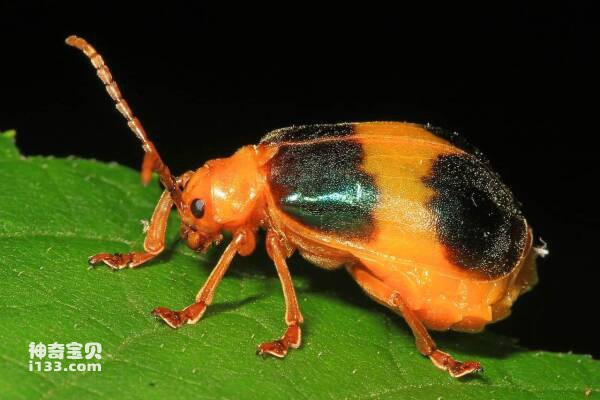
9. Larger elm leaf beetle
The greater elm leaf beetle is the only species of the large Neotropical genus Monophora found in the United States. It is commonly found in forests. Like ladybugs, this species has a yellow-orange body and four large black marks. Although they are similar in body shape to ladybugs, the larger elm leaf beetles are more pear-shaped than dome-shaped.
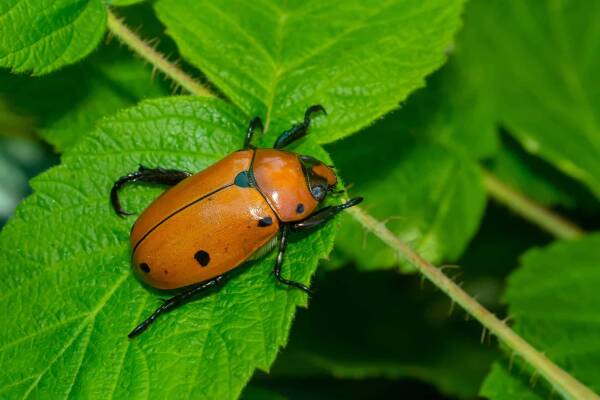
10. Grape beetle
The grape beetle, also known as the spotted June beetle or spotted grape beetle, is a scarab beetle that resembles a ladybug. It is grayish-yellow in color and has four small black marks on each side. Like most ladybugs, grape beetles have completely black legs.
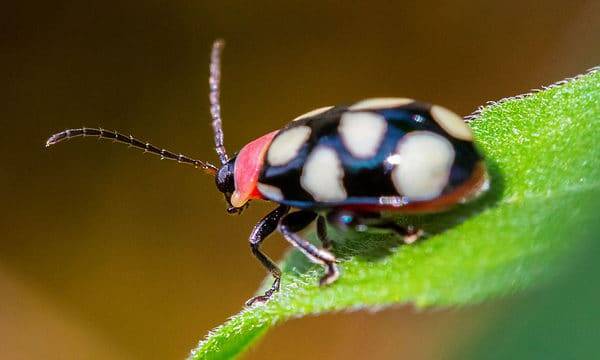
11. Eight-spotted flea beetle
The eight-spotted flea beetle is a small insect in the family Chrysomelidae that is commonly found in North and Central America and the Caribbean. Its body is black with white spots, almost resembling a ladybug. Additionally, like most ladybugs, the eight-spotted flea beetle has spots on its head, often with just a single white mark. Also, its body is longer than that of the domed ladybug.
We created this article in conjunction with AI technology, then made sure it was fact-checked and edited by a Animals Top editor.